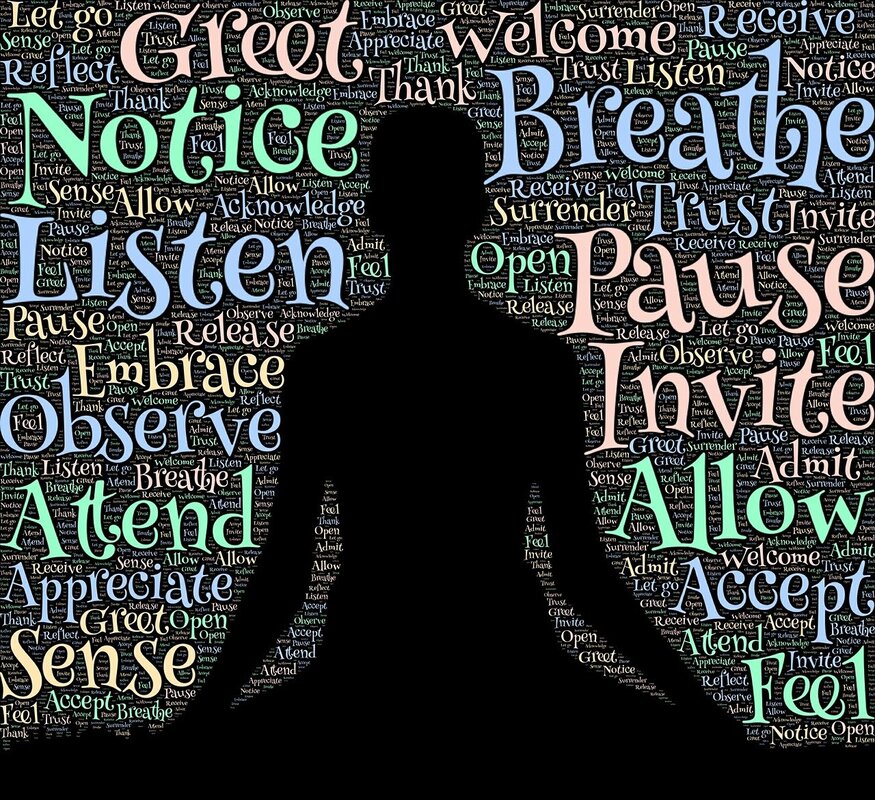|
Divorce is a challenging experience for both parents and children. Divorce is challenging for children only if it is not dealt with well by both parents and the parenting is not aligned. So it is important to consider the quality of co-parenting and parenting strategies.
When couples divorce there needs to be a time of adjustment as there is guilt and a sense of failure when thinking of a divorce or divorcing. However when deciding to divorce or stay you need to consider the quality of the relationship for the children. For example, if you are constantly fighting and there is emotional and physical abuse involved then you are teaching the children that unhealthy relationships are normal and they will either go into an abusive relationship or become abusive when grown up as they won't know what is healthy. Moreover, ongoing fighting is not healthy for anyone and toxic for children to stay in. However, if you do separate then work towards being harmonious for the children. I understand for abusive relationships that can be difficult as the abuser often continues to abuse through the system and co-parenting. Younger children may show behavioural challenges when the parents divorce and think the main parent they are with are also going to abandon them. Communicate to the child about what is happening, it is not their fault and continue the dialogue. I also recommend counselling for the children to check-in with how they are feeling and give them a safe space to talk through their experience. Counselling can help manage the behavioural challenges. Behavioural challenges may be externalising behaviour such as hitting, yelling and being oppositional. It can also be internalising behaviour such as sadness and being withdrawn. So if your child is quiet then see is as a sign of not coping. Moreover, children will carry the guilt of the split if they don't understand what is going on due to lack of communication by both parents. Both parents and children need time to adjust to the divorce. The parents will also be adjusting to their own emotions while navigating sharing the children. Just remember that it is not okay for the children to live in an unhappy, unhealthy home environment and a split family is sometimes the best option. Research has shown that children adjust better in a split family then a family where there is unhappiness and conflict. Moreover, adolescents cope better with divorce then young children as they are independent and less reliant on adults. Research shows that children with parents who are divorced and don't manage it well become insecure and oppositional. Research also shows that children in unhealthy homes also become insecure and oppositional. However, the opposite is for healthy families and harmonious splits. Remain open, honest and your best selves when divorcing for your own wellbeing and the children. Avoid conflict and take responsibility of co-parenting.
0 Comments
Psychological safety according to the Fair Work Act 2019 means that the employee's mental health is considered in the workplace and strategies are implemented so they are mentally safe. Often bullying, micromanagement and a lack of work/life balance and compromise psychological safety. Moreover, when there is an incident and lack of empathy is shown to the injured employee, then psychological safety is further compromised.
It is important to remain proactive in the workplace to encourage psychological safety. Proactive strategies include regular check ins without micromanaging to review the employee's performance but also their mental status, to intervene if there is a risk to their psychological safety and also improving your recruitment process to ensure there is an optimum person-job fit. While sending the employee to EAP services for counselling or coaching can help it is also important to consider a systems approach. A systems approach will be the culture of the organisation, how each member of the team identify with each other and if there is unity and how the employee identifies with their workplace vision, goals and values as well as the work itself. Trauma experiences are different for everyone but essentially it is one or more exposures that is over and above your capacity to cope. However, as it was difficult to cope you may have dissociated which is similar to switching the mind off or a feeling of floating away. This is when the amygdala in the brain tells you to freeze to survive. You may also become aggressive and fight or flight by running. Again this is when the amygdala tells you to fight or flight to survive. These strategies are helpful at the time as they would have been your only way to cope. However, when you continue to use these strategies when triggers occur but your current situation is actually not harmful then you need to process your trauma to heal.
Some people use money to heal from trauma. Flight may mean gambling to cope with the trauma symptoms to avoid noticing what you are going through. You may have felt that money was more important than you when you were young so waste it away as the association is negative. You may spend money and become a hoarder as your things were either given away or as a child you felt your belongings were not valued or lived as a have not of society. This doesn't mean for parents to buy their children whatever they want as it is important to teach them it is normal to do without sometimes but some parents may be neglectful on the abusive side and not consider their child's needs which may include giving away most toys they love. For a child this may be traumatic. Instead get the child to be part of the decision making. Some families are unfortunately poor and the children may grow up wanting to make up for the past by hoarding things to avoid the feeling of lack. People may also use money to feel a sense of belonging that is not real. However the real feeling of belonging may be too triggering as it was a traumatic experience when they were young so a superficial experience is safer. Noticing how you use money can help you identify your coping strategies and if they are maladaptive. Healing from your past trauma may help you change your relationship with money. Have a look at your bank statements which will tell a story of how you use money and then identify the reason why you are spending in such a way by finding the association between past and present. Change your present by healing from your past and have a better relationship with money. Literature has examined conflict management strategies as avoidance, accommodation, forcing, collaboration and compromising. In order for employees to cooperate they need to collaborate and have the conversation about differences and disagreements. Disagreements can be resolved through negotiation. It is important to consider what is being negotiated, where to negotiate and how to do it. Moreover, it is also important to consider the psychological aspects of people in the negotiation process.
Psychological aspects of negotiation may include heuristics and biases. The heuristics and biases may influence the perception of what is being negotiated and influence the outcome. Research has identified 21 biases that can influence decision making in the negotiation process. For example, the bias of loss aversion may influence how an increase in pay would seem. The company may see it as a loss and the employee may see it as a gain. Another bias is the compatibility bias where the negotiators assume that the issue is not compatible with the opponents leading to increased conflict. A third party may be required to assist with managing the bias. Mood and culture affect bias which may be unconscious and require a third party to identify and manage. Strategies to negotiate include the Warner’s style of negotiation where the negotiator’s style may include feeling powerful (bullying or confidently promoting ideas) or gentle (carefully suggesting ideas and quietly manipulating), while being coercive and persuasive. The Warner’s style of negotiating can have strengths and weakness but can provide a framework on how to negotiate. Moreover, the interest-based model describes the negotiation skill of trust as an essential element. Trust is needed to manage risk as people negotiating need faith in the ability to solve the problem. Moreover, leadership that is empowering and trustworthy can provide psychological safety when managing conflict. The interest-based model of negotiation also includes motivation to negotiate, the exchange of information and appropriate language. There needs to be time to explore each other’s interest and space for creative invention of innovative ideas. People negotiating need to understand the dynamics of integrative negotiation and be provided with a moderator to assist. When communicating a moderator would need to ensure that each party understands there is equal involvement. Communication skills when negotiating include the ability to reveal only what is required to be negotiated and close the gap of differences, be flexible but realistic, have the ability to relate well with others, empathy and analytical ability. The vision of the outcome, stakeholders involved, and a plan would also need to be identified before negotiation starts. While negotiations take place, it is important that all parties understand the value of remaining until the end. A representative such as a HRM will manage the negotiations and ensure that both parties feel heard. The opening phase will involve not committing to an outcome, observing all questions and listening attentively to each other’s strengths and weakness and challenging each side’s position. The representative will encourage each party to challenge the other, while each will listen and ask appropriate questions. The bargaining phase will enable each party to narrow the gap of differences by concealing and revealing information within their argument. If a person decides to use tactics such as coercion, then it would not be treated as disrespectful but as a legitimate tool to negotiate. However, trust and honesty need to be encouraged when exchanging information, the effort the resolve the conflict, negotiation is in good faith, and there is limited opportunism as the exchange is in the best interest of all parties. Both parties are to seek a common interest when negotiating and a win-win collaborative approach. Trust also involves that each person negotiating including the representative respecting each person’s view. However, there are times when viewpoints within the negotiation process does not converge and a decision to end the conflict may be required if parties are not willing to negotiate. To improve the negotiation process, the representative’s role include ensuring the conversation stays on track, each party has equal say and an outcome in the best interest of each party is achieved. The negotiation will be closed where there is an agreement to do something in the future. An agreement may mean one party does not get what they want due to viewpoints not converging. However, a collaborative approach is recommended where information is exchanged to focus on common interest rather than self-interest. Policies and procedures would be developed to guide the negotiation process, so it remains collaborative and supportive and training developed to teach staff the process. Performance management includes ongoing performance development and managing underperformance. Underperformance may occur when an employee loses motivation in their work role, not being challenged enough, bullying and a low wage. Underperformance may also occur due to unclear work expectations, personal issues and external factors such as challenges within the industry.
Underperformance can be managed in various ways such as identify the cause of the issue rather than seeing the employee as the problem. Management may also include regular check ins without micromanaging, supporting the employee with external counselling if personal issues are the cause, review the culture of the workplace and offer mentoring. A last resort usually includes a Performance Improvement Plan. Effective policies and procedures need to guide performance management and dismissal if no change occurs to avoid legal action including unfair dismissal claims. Parenting is one job that does not come with training. Even if it did there are challenges of generational trauma causing impaired parenting even with good training. This leaves people feeling unloved which results in avoidant or anxious attachment styles when in a relationship. Learning love languages is a healthy way to understand that different people have their own way of showing love. It may be with giving their time, gifts, words of affirmation, touch or acts of service. Parents often show acts of service when doing things for their children such as preparing lunch or cooking. However when an adult is in a relationship and feels unloved when young and have the schema that they are "unlovable" will hear through that schema. For example one partner may say "I'm tired from a long day at work, have a headache and need to go to bed early" may be heard by the unloved partner "I don't want to be with you as you are not good enough". We often hear through our schema or belief system so if your partner is reacting differently to your words that did not mean harm try and understand their story through a healthy dialogue and talk about the fears such as being unloved or disapproved of. Talk about what you like from each other and work through the challenges with a healthy dialogue.
Having a healthy perspective can help manage debt and learning from experience can help you avoid debt in the future. For example, ongoing budgeting, saving for an emergency fund, living within your means and being realistic about money.
The normative principle can guide debt management and decide which to pay off first. Most people prefer to put the same amount on all debts or according to the debt account aversion pay off the smallest debt first. According to the normative principle, it is best to pay the minimum amount of all the debts to avoid paying fees and surcharges. Then you would use the remaining money, if any, to reduce the debt with the highest interest rate. When that loan is paid off then you move to the next debt with the highest interest rate. By continuing to use the normative principle you end up paying all your debts and paying off the last with the least amount of interest rate. However, from a psychological point of view, consumers don't consider interest compounding and won't use the normative principle. Instead the consumer will use a mental short cut and reduce all debts equally. When you are paying the loan with the highest interest rate you are actually making your money work for you. For example, if you pay a loan or credit card debt with an interest rate of 20% rather than one with 15% then you are reducing 20% on top of the debt each month and effectively paying more. Twenty percent compounded each month adds up compared to 15%. Working to reduce one loan at a time while paying off the rest at the required amount will also make debt management less overwhelming as you are focused on paying one debt quicker rather than all of them. You are more likely to manage debt better by breaking up your goals to smaller subgoals. People often focus on reducing the smaller debt first as it offers relief that one debt is diminished when in fact it is not logical as the smaller debt's interest rate may also be smaller making debt management less effective. However, American financial specialist Dave Ramsey advocates on consumers making some win by paying off the smaller debt to make debt management more achievable rather than paying off the one with the highest interest rate first. A study investigated participatants who were told about the interest rate and which debt to pay off first. Meaning they were encouraged to pay off the debt with the highest interest rate first, however not one participant followed the financial advice and preferred to pay off the smaller debt first. The instructions were changed from complex to simple which did not change financial behaviour. Financial literacy did not even change behaviour. The participants made the best decision when they were not allowed to close the account. Closing the account quickly would have offered relief but would not be the best financial decision. Therefore, reducing the ability to pay off small debts by creating challenges with closing the accounts worked better than offering financial literacy and advice, due the debt account aversion mindset. The participants were more focused on reducing the debts than saving money. On the other hand at least it encouraged them to pay the debts off. In summary heuristics play a role in financial decision making more than financial literacy and advice. However, while it may not be the best decision, if it motivates people to pay off debt that it is helpful. While debt account aversion can help motivate people to reduce debt, being aware of heuristics and focusing on how to manage money more effectively is the better option. Most couples believe that they need to be the same and a good match but often what happens is they find someone who has a character they need such as speaking up or listening more. In Imago Therapy couples seeking symbiosis which is being similar and sharing a similar internal world or belief system eventually become frustrated when they notice differences. A healthy way of seeing your partner is being different and appreciating the differences. It is about being curious about the differences, respecting boundaries, honouring diversity and appreciating different points of views. Differentiation may create tension in relationships when symbiosis otherwise known as enmeshment creates tension. This is because symbiosis is losing yourself in the relationship rather than growing to who you are meant to be.
Couples who seek symbiosis or sameness end up being critical to their partner who shows any differentiation. Comment such as "how can you think that way", "Why did you buy that, you should know what I want", and "It is your fault with how I am feeling" is a consequences when differentiation appears. People who are in a symbiotic relationship believe there is a right way of thinking, feeling and being. In these relationships you can lose yourself and not appreciate differences. When each person in the relationship is curious about the differences they may learn new cultures, religion, food, ways of managing money and hobbies. They may not need to engage in any of the differences but appreciate them. You appreciate each other that each is not the other but you are your unique self. You both feel safe to grow, have empathy and listen without distortion. Empathy means experiencing what the other person is feeling and understanding that the frustration you or they feel is in fact what the person needs but has become irritating due to feeling threatened as the unconscious is telling you or your partner it is not safe. For example, you may have connected with your partner because they were assertive and then it became irritating. The assertive part started to feel controlling. It may mean that you didn't feel safe when you were young to have a voice and the unconscious feels threatened when it it is time to speak up so you work towards exiting the relationship. Exiting may be spending more time with friends and working longer hours. But if your unconscious becomes conscious you can actually use the experience to heal and grow. On the other hand, the controlling partner needs to listen more and let go of control. Aim for differentiation rather than someone who thinks the same. Learn to appreciate each differences and learn from each other to grow into the best version of yourselves. #couplescounselling  Hoarding may include challenges with spending which is called acquisitions or avoiding throwing things out. Online spending is a challenge with people hoard, who using spending to manage emotions or challenges with managing impulsive behaviour. Purchases may be planned or unplanned, however purchasing goods online can influence impulsive behaviour as there is a lack of deterrents that can help with managing impulsive behaviour and planning. People often go online to buy a planned item and then spend more than expected. Sometimes items are grouped to influence more spending. Conscious decision making require the ability to step back and reflect. Moreover, stimulus can influence behaviour for online purchasing. Stimulus may include special deals which can cause the cognitive bias of fear of missing out. Research shows the group shopping such as Groupon and unfamiliar brands influence impulse spending and can be a challenge for a consumer who struggles with impulsive spending, hoarding or emotional control. To increase online spending retailers limit physical stores, reduce mental and time effort when spending and improve the shopping experience. To reduce online spending, the consumer would need to create a strategy where more time is required when spending and the fear of missing out is reduced by realising it is an illusion. When spending online, have someone with you to talk through the process so you can think while talking, take your time and think about the purchase, don't spend online if you are emotional but work through your emotions by contacting a helpline, writing in a journal or talking to a friend. Make a habit not to let specials influence your behaviour as there is no such thing as missing out on anything. Furthermore, you may have a separate bank account that don't charge a fee for online spending and automatically deposit a portion of your income into that account to manage impulsive spending and online spending in general. Decision making also requires talking through the process, so talk to a family member or friend to discuss your strategy as that can help with reflection and improving your capacity to decide rationally. Researchers have found that people who have insecure attachment styles have more worries around money, believe they are less well off, and don't deserve money. Moreover, people who have had a loss of social connection in childhood have unhealthy thoughts around money. People will use money to manage pain. For example a person may build wealth for others to see them as grandiose to cover up the broken self and improve their self worth. They may think "If I have more stuff, I will be seen as I am worth something". If a person has a dependent attachment style as an adult they will put less effort into making money to remain dependent on others or the system. If a person has an anxious attachment style, they will want to control their situation. Control may include avoiding spending to make sure they are financially secure. If a person was denied what they wanted when young may end up hoarding to avoid experiencing lack. Additionally the higher the insecure attachment style the less transparent they will be about their finances to their partners. As a result, healing trauma can heal how you manage money. #trauma #money #finances #financialpsychology
|
AuthorProviding evidence based information regarding psychology for individuals and workplaces to empower and inform. Archives
March 2024
Categories
All
|








 RSS Feed
RSS Feed